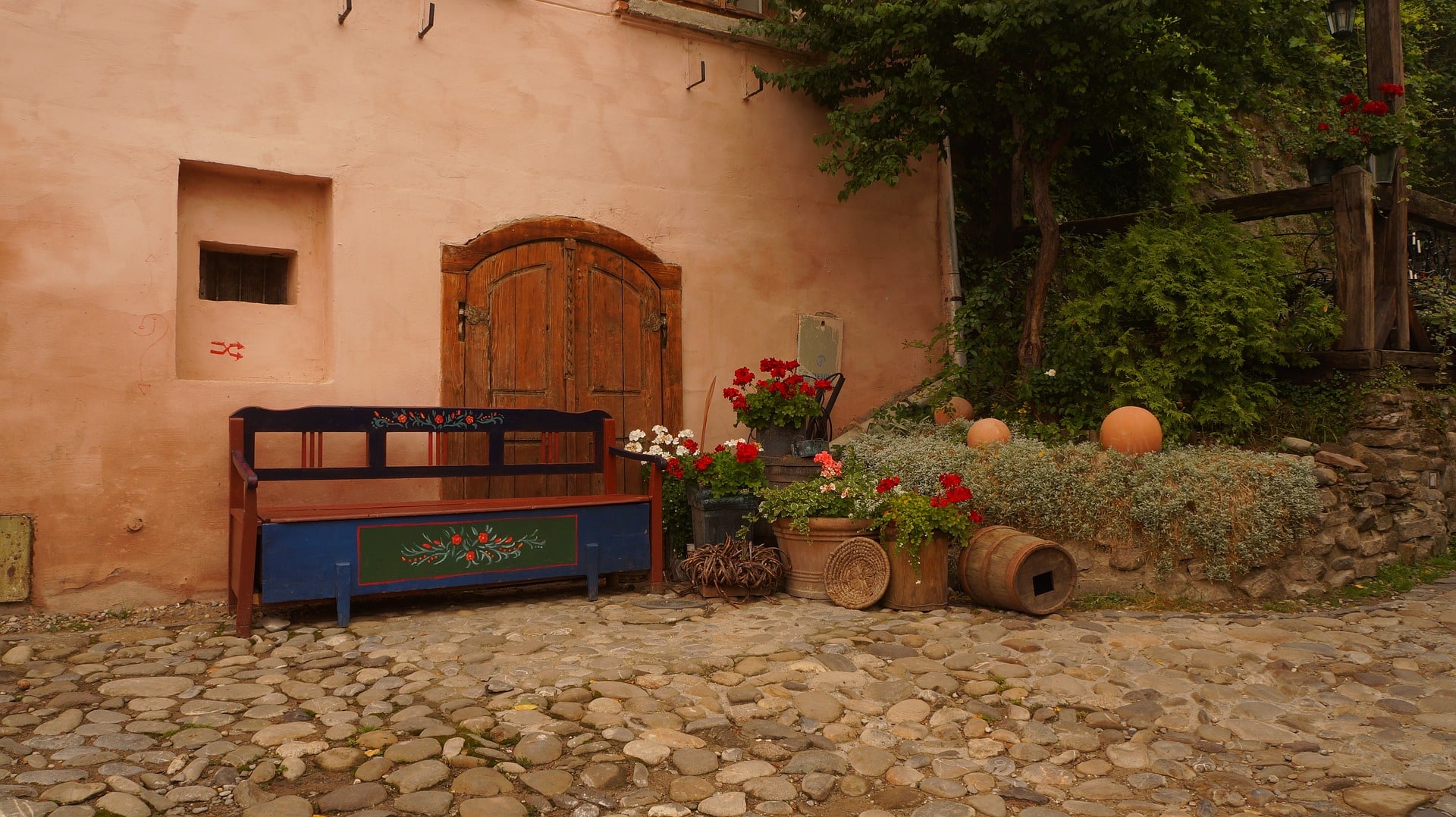As a kid, I was captivated by the Middle Ages. Spurred on by films like The Hunchback of Notre Dame and Shrek, I spent hours on end imagining what life was like in a time where knights and kings were real and people lived in quaint, fairy-tale towns.
The moment I read about Sighisoara (see-ghee-shwar-ah), one of the best-preserved medieval citadels in Europe and the quintessential fairy-tale town, I knew I had to visit. Sighisoara is nestled in the heart of Romania’s Transylvania region, the perfect setting for its old-world ambiance. Settled sometime in the twelfth century by Saxon Transylvanians, it was once a hub for guilds, traders, and religious life in the region. Today, the fortified citadel remains largely inhabited and, as an official UNESCO World Heritage site, receives tourists year round.
If you are a fan of the Middle Ages or fairy tales, generally, then you’re sure to fall in love with Sighisoara. While you won’t encounter talking Donkeys or cranky ogres on your trip, you’ll quickly find that Sighisoara’s charm and stunning ambiance put even Duloc to shame. Read on to learn why this is one of my favorite destinations.
Things to do in Sighisoara
Sighisoara Historic Center
Sighisoara’s historic center, roughly the area occupied by the citadel, is the most-visited part of the city. This is the area that houses the town’s primary attractions, including the clock tower, the church, the historical museum, and others. In the historic center, you’ll find a nice collection of museums, souvenir shops, historic monuments, and plenty of vendors who sell trinkets related to the city. This is also the most beautiful part of the city. Strolling along the historic center’s cobblestone paths and medieval passages is a great way to witness the city’s incredible atmosphere and gain an appreciation for its beauty.
Clock Tower
The defining feature of Sighisoara’s historic center is undoubtedly its clock tower, the tallest structure in the citadel. Historically, the tower served as an entry point into the fortified center and provided a vantage point from which fires could be spotted in the low-lying villages beneath the citadel.
The tower features a mechanical clock which was added to the structure during the 1600’s and incorporates seven puppets, one for each day of the week and each of seven ancient European gods. Each hour, the puppets exit the tower and twirl about, along with other artistic elements. Be sure to stand in front of the clock tower when the hour changes so that you can peep the puppets who exit the tower to ring in the new hour.
Museum of History
Located within the clock tower is Sighisoara’s Museum of History, a collection of exhibits centered on the themes of archaeology, folk culture, and clock making. The museum is split between the levels of the clock tower and each level offers new exhibits and themes.
While the exhibits are interesting and worth visiting on their own merit, the best part of visiting the museum of history is the clock’s mechanism on the fifth floor. Visitors can freely view the clock’s internal mechanism, including the seven puppets and their rotating platform. The final floor hosts a balcony with fantastic panoramic views of the city.
Entrance to the museum is 15 Lei, or $4 USD. I’ve included the museum’s schedule below:
May 15 – September 15
Monday Closed
Tuesday-Friday 9:00 am – 6:30 pm
Saturday-Sunday 10:00 am – 5:30 pm
September 16 – May 14
Monday Closed
Tuesday-Friday 9:00 am – 3:30 pm
Saturday-Sunday 10:00 am-3:30 pm
The Covered Stairway
One of the city’s most fascinating elements is the Covered Stairway, known colloquially as the Schoolchildren’s Staircase. Built at the command of Sighisoara’s mayor in the 1600’s, the staircase was designed to ease the journey of school children who had to ascend to the top of a steep hill for school each morning. During the winters, the short journey was difficult and even dangerous, so the mayor commissioned the building of the 300 steps that lead from the citadel to the church on the hill.
Climbing the covered staircase is a great way to experience a local landmark and get to the church on the hill quickly. You’ll find the entrance to the staircase on the south end of the citadel’s main street, Strada Scolii.
Church on the Hill
The Church on the Hill– Saint Nicholas, is the third largest church in Transylvania and an architecturally significant building for the entire region. The church was constructed during the 1400’s by Sighisoara’s Saxon settlers and is an expression of the Gothic style. Unlike other Gothic churches of Transylvania, which are marked by their dramatic aesthetic, the Church on the Hill is surprisingly minimalist in appearance.
The church can be seen from all over Sighisoara and Mures County. To visit the church, ascend to the top of the hill through the Covered Staircase and enter through the doors in the front.
Visit the Birthplace of Vlad the Impaler
Vlad the Impaler is an infamous Transylvanian ruler, known for his ruthless treatment of the kingdom’s enemies, primarily Ottoman Turks. Legends of Vlad’s cruelty and hostility towards his enemies inspired Bram Stoker’s Dracula and have made him a well-known historical figure throughout the world.
Disappointingly, the birthplace of Vlad the Impaler in Sighisoara’s historic center is a total tourist trap. I don’t recommend you spend any money to visit its interior; yet, to pass it up altogether would be a shame. The house, painted bright yellow, is just a short walk from the clock tower in the historic center. There is a nice restaurant inside the house and a plaque outside which annotates the building’s historical significance.
Biertan Fortified Church– Bonus Side Trip from Sighisoara
If you’re a fan of fortified villages and churches, then it would be a shame to visit Sighisoara without incorporating a side trip to the fortified church of Biertan. A thirty minute drive from Sighisoara, Biertan is an incredible village with an authentic vibe and a fantastic Lutheran church at its center. As a bonus, the drive from Sighisoara to Biertan will take you through rolling hills and lush forests– some of the most beautiful countryside in Transylvania.
How Long Should You Spend in Sighisoara?
While opinions on the matter will vary, I think Sighisoara can be seen in a day. Two days could be overkill for this destination unless you plan on taking sidetrips to nearby villages and landmarks (which I recommend). Three days is certainly overkill unless you are a low-maintenance traveler who likes to travel slow and soak in the ambiance of a place.
While Sighisoara is beautiful and interesting, the fact is it’s not a large city. If you stay longer than a day then you may run out of things to do. That’s why I recommend incorporating Sighisoara in your itinerary as a day trip from the larger, more interesting cities of Brasov and Sibiu. Sighisoara is easily accessible from either city and is about 1.5 hours driving distance from both cities.
What is the Best Time to Visit Sighisoara?
The best time to visit Sighisoara is undoubtedly during the Spring and Summer. Not only is the weather nicer during these seasons, but more of the attractions are open and accessible to tourists.
That’s not to say, however, that Sighisoara should be avoided during the winter months. Transylvania, which is a deep green color during the warm seasons, becomes a winter wonderland during the Winter and especially during Christmas and New Year’s. Sighisoara also hosts a Christmas festival each year which lasts the entire week leading up to Christmas. During the festival, open air concerts are held daily in the historical center and the streets fill up with vendors selling holiday treats.
Is Sighisoara Worth Visiting?
If you’ve read my site at all, then you know how obsessed I am with Romania and Transylvania, in particular. So, if it’s up to me, then of course I would suggest you add Sighisoara to your itinerary. I often write about the “otherness” factor that I seek out in my travels and Sighisoara has definitely got it. Few places in the world possess the natural beauty and architectural ambiance that make Sighisoara such a unique, distinctly medieval destination.
What’s more, Sighisoara packs a lot of bang-for-your buck as a travel destination. You can easily see the entire city in just a day and it’s just a short drive from Sibiu or Brasov. In return, you’ll get to visit a new city and one of the most famed towns in all of Transylvania.

